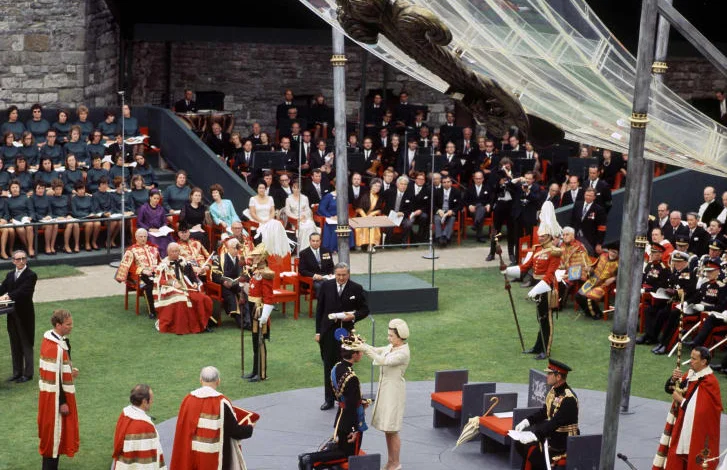
After Queen Elizabeth II ascended to the throne in February 1952, the popular composer Ronald Binge changed the name of a light and graceful piece he had originally titled “The Man in the Street” to “Elizabethan Serenade.” He did this, reportedly, to reflect the optimism of the new Elizabethan Age.
While equating the proverbial “man in the street” with the proclamation of a new queen might be considered an act of lèse-majesté, Binge was clearly on to something. The Queen was 25 years old, and began her reign in an era of continuing postwar austerity and ration books that, equally, was characterized by an optimistic new social deal — a fanfare for the common man — underpinned by a national health service, free education and the welfare state.

Moreover, as the British Empire dissolved, this, it seemed, was not an era of pomp and circumstance, but of modesty. Of modesty, too, in architecture, where the palatial country houses of Elizabeth I’s England were superseded by such unassertive yet inspired designs as the prefabricated schools rushed up by local government architects. Evidently, the architectural landscape of Queen Elizabeth II’s United Kingdom was to be very different.
Opened by King George VI in 1951, Royal Festival Hall had already set a tone for a new architecture that was at once modern, inviting, elegant and democratic. The building’s setting along a riverside promenade was magisterial and yet for everyone, from kings and queens to Ronald Binge’s man in the street.

If the Queen’s reign had been brief, this may well be how architectural historians would have characterized the New Elizabethan era. Queen Elizabeth, however, has been the longest serving of all British monarchs, and over the past 70 years new British architecture has changed beyond recognition.
The New Elizabethan era might well be spoken of in terms of the Brutalist universities, hospitals, multistory parking lots, art galleries and concert halls of the 1960s. Or of that decade’s concrete public housing, with its continual dew and defining damp. Or even the short-lived craze, emerging with the Mini and the mini skirt, for all things plastic and disposable.
In July 1969, Neil Armstrong and Buzz Aldrin landed on the moon. That same month the Queen’s eldest son, Charles, was declared Prince of Wales at an investiture ceremony held at Caernarfon Castle. Within these medieval walls, Lord Snowdon — whose lightweight, see-through aviary at London Zoo, designed with Cedric Price and Frank Newby, had been opened to great acclaim in 1965 — created a theatrical setting for the event that was, by any measure, pure ’60s.

Prince Charles took his oath under a Perspex canopy (all the better for television cameras to see through) adorned with a plastic version of the Prince of Wales’ feathered emblem. He might have worn a plastic raincoat rather than an ermine cape.
If this was new Elizabethan architecture, then so, too, was the reaction to this modernity as, after the economically depressed 1970s, postmodernism and neoclassical architecture took a bow. The latter, championed by the Prince of Wales, was heralded by a revival of chintz and stately home decor magazines like The World of Interiors.
All this was somehow Elizabethan, too, as — most certainly — was the restored and enlarged Queen’s Gallery at Buckingham Palace. Designed by John Simpson and opened by the Queen during her Golden Jubilee in 2002, the new gallery, housing part of the Royal Collection held in trust for her successors and the nation, featured a chaste Greek Doric entrance fronting polychromatic galleries.
